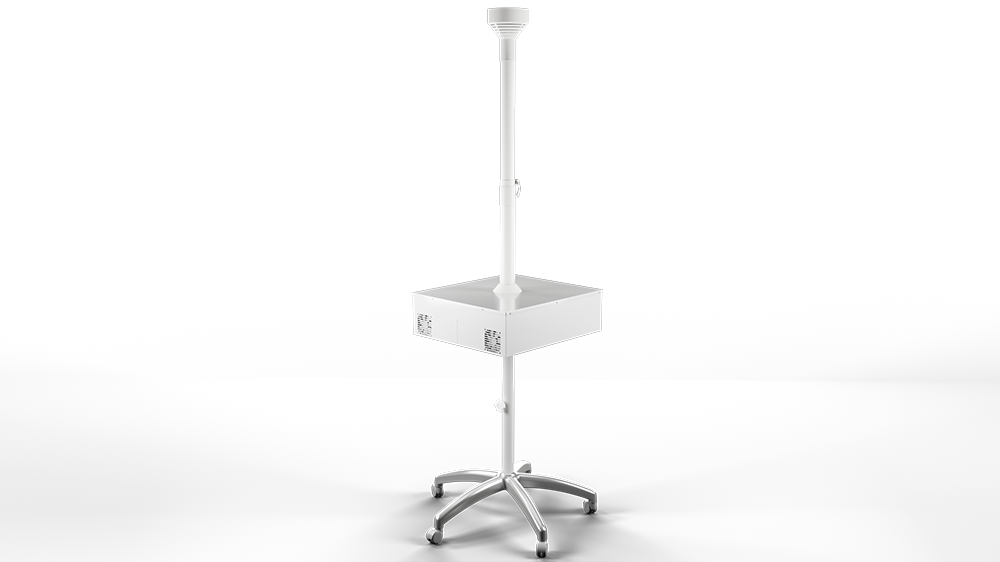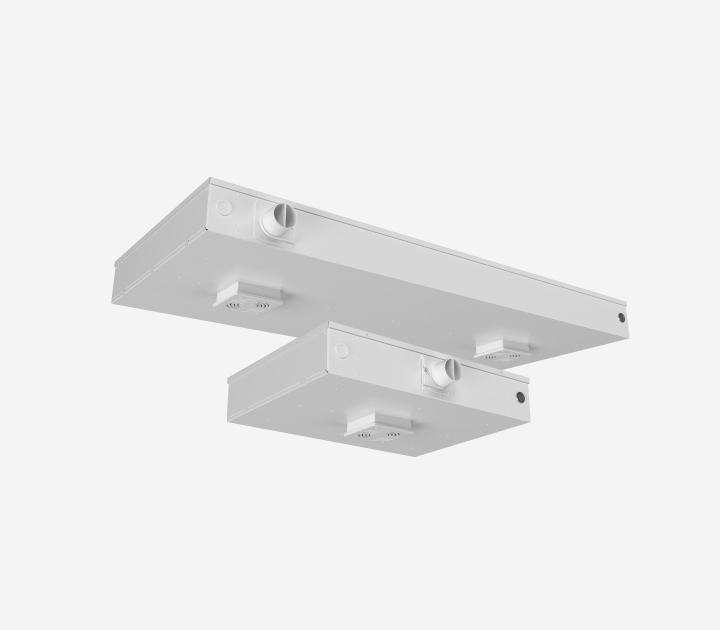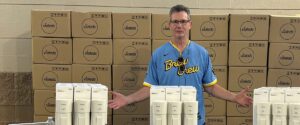With hurricane Ian hitting Florida, we know as well as anyone, the large amount of remediation that is to come. 5 years ago, hurricane Harvey hit our headquarters in Houston, Texas, and even after half a decade, there are still hundreds of homes that are still being remodeled. At illumiPure, we’ve learned a lot about mold and fungus in the last 5 years and we’ve asked our Chief Science Officer, John Simmerling, to share his findings on mold, fungus, and how illumiPure products can help your remediation and abatement efforts.
What is the difference between fungus and mold?
Fungi are considered a third “kingdom” of living organisms. The other two are the Plant and Animal kingdoms. Many scientists have speculated that fungus may have preceded the other kingdoms during the earth’s evolution. Mold is a part of the fungus kingdom, but mold is a different species.
I find that the video provided is a good overview of Fungi. The fungi kingdom includes special like yeast, mold, and mushrooms.
How does fungus effect humans?
The scientific properties of fungi are startling. It has been found that some fungal species, like Claviceps Purpurea, which, when formed on plants, produce alkaloid substances, which include Lysergic acid, which can be synthesized to Lysergic Acid Diethylamide, or what is known as LSD.
Specific mushroom species contain the compounds psilocybin and psilocin, which are known to have potent psychological effects. Psilocybin has a chemical structure similar to serotonin, which regulates neurological functions, and can alter mood and thought patterns and even generate hallucinogenic effects. Recent studies have shown that tiny doses of psilocybin may be helpful as psychotherapies to treat certain forms of conditions, including PTSD.
The benefits and dangers of fungi and mold.
Some species of mold have been used to synthesize antibiotics (penicillin, cephalosporins1) and others used to suppress immune function in transplant patients (cyclosporin2). Another mold-related drug is lovastatin, which is used to lower LDL cholesterol.
However, fungi and mold can also produce mycotoxins and toxins, which can affect humans in various ways, including respiratory inflammation, pulmonary disease, allergic reactions, chronic disease, cancer, and death.
Aflatoxins (produced from the Aspergillus family) and fumonisins are mycotoxins that affect food supplies globally3 and have been shown to cause organ damage and other diseases when ingested.
Wild et al. had proposed3, over a decade ago, that “Notwithstanding the need for a better evidence-base on mycotoxins and human health, supported by better biomarkers of exposure and effect in epidemiological studies, the existing data are sufficient to prioritize exposure reduction in vulnerable populations. (Wild et al., Carcinogenesis, 2010, 71-82).”
Thus, interventions are made to reduce the presence of mold in indoor spaces and limit exposure to fungus, fungal spores, mold, and mold spores in indoor dwellings.
[1] Cephalosporins are a class of β-lactam antibiotics initially derived from the fungus Acremonium, which was previously known as Cephalosporium
[2] https://owlcation.com/stem/Medications-From-Molds-Fungi-and-Health
[3] Wild CP, Gong YY. Mycotoxins and human disease: a largely ignored global health issue. Carcinogenesis. 2010 Jan;31(1):71-82. doi: 10.1093/carcin/bgp264. Epub 2009 Oct 29. PMID: 19875698; PMCID: PMC2802673.
What is Spore?
Fungi form hyphae, structures that forcibly eject reproductive spores into the air. Fungal spores (and those of mold) can remain airborne in high numbers, and humans regularly breathe fungal spores in both indoor and outdoor settings. Since not all fungal species produce mycotoxins or toxins, many of these are harmless or can cause mild irritation. Spores containing toxins can have more severe health effects.
What are the negative effects of being exposed to fungi and mold?
While humans are typically exposed to fungi and mold in outdoor air, the more severe effects produce nothing more harmful than allergy-like symptoms, such as eye and nasal irritation. Of course, this may vary by season, local climate, proximity to agriculture, and conditions present after severe weather events.
Other factors can surprisingly affect the presence of indoor fungi and mold. From Kuhn et al., in Indoor mold, toxigenic fungi, and Stachybotrys chartarum: infectious disease perspective:
While promoting mold growth, moisture itself may be critical in “sick-building syndrome” illnesses since humidity affects mite and ozone levels, as well as off-gassing, salt, and acid formation. … [in addition], Gram-negative bacteria, endotoxin, and mycobacteria are found in water-damaged buildings in association with mold.” [1]
While human exposure to fungal and mold toxins may affect our health, there is widespread disagreement as to the severity of disease that some toxins may cause, such as Stachybotrys, also known as “black mold.”
Stachybotrys spores measure 8 to 12 μm in size and have often been portrayed as the cause of severe diseases, including pulmonary, neurological, and oncological diseases. Yet clinicians and researchers still seek the mechanism of action and causal relationship between Stachybotrys and these specific disease states.
That said, it is abundantly clear that exposure to Stachybotrys, penicillium, aspergillus, and other potentially harmful fungus and mold is to be avoided through remediation and removal.
[1] Kuhn DM, Ghannoum MA. Indoor mold, toxigenic fungi, and Stachybotrys chartarum: infectious disease perspective. Clin Microbiol Rev. 2003 Jan;16(1):144-72. doi: 10.1128/CMR.16.1.144-172.2003. PMID: 12525430; PMCID: PMC145304.
What guidance do the WHO and CDC have on preventing mold-related illness?
 A 2009 document of WHO guidance can be found at the end of this section.
A 2009 document of WHO guidance can be found at the end of this section.
The presence and accumulation of fungi and mold in indoor spaces are directly related to indoor temperature, humidity, dampness, and relative humidity.
Other factors that affect the spread of fungi and mold include fluid dynamic conditions within the building, the presence of dust mites and bacteria, the state of the central HVAC system, building materials themselves, and certain volatile compounds and gases.
The movement of air within the building and the penetration and ingress of outdoor fungal and mold contamination also affect indoor air quality related to fungi and mold.
How does the Air Guardian and CleanWhite help to reduce fungi and mold exposure?
As stated above, it is essential to follow WHO and CDC guidelines to reduce the causes of indoor mold, including reducing moisture, removing contaminated materials, increasing ventilation, disinfectant cleaning, and regulating the indoor temperature and humidity (among many recommended remediations).
Even with remediations, fungi and mold spores may remain, especially after severe weather events. Spores may continue contaminating indoor air from ingress and penetration of outdoor air into the building – or incomplete remediation.
The Air Guardian® device is a sealed air purification and disinfection device. It is designed to destroy pathogens, including fungi, mold, and spore forms, within a single pass through the device. Using a combination of intense ultraviolet light energy, photochemical oxidation, and extended air “dwell” time (which increases the dose of the energy), it has been shown to destroy 99.9% of fungi and mold in the air.
How does continuous disinfection help against fungus and mold?
 Since fungi and mold also grow on many surfaces, often releasing toxins to penetrate the surface, attention must also be given to continuous surface reduction.
Since fungi and mold also grow on many surfaces, often releasing toxins to penetrate the surface, attention must also be given to continuous surface reduction.
Again, occupants and owners should follow WHO safety, occupancy, remediation, and disinfection guidelines.
illumiPure’s CleanWhite® light can reduce mycelium and colonies of fungi and mold from surfaces using white-illuminating 405-nanometer and 470-nanometer spikes of visible light energy.
Several studies have shown the efficacy of CleanWhite’s precise and intense visible energy spikes to destroy fungi and mold on surfaces.[1] Depending on the species, CleanWhite® can destroy the fungi within 3-4 hours.[2]. Some species may require more saturation or dose, but most will be destroyed within 24 hours.
Best of all, CleanWhite® can be installed as a regular, visible light fixture, illuminating in the white spectrum, and thus continue to remove fungi, mold, and other pathogens from surfaces once remediation is complete.
[1] L.E. Murdoch, K. McKenzie, M. Maclean, S.J. MacGregor, J.G. Anderson, Lethal effects of high-intensity violet 405-nm light on Saccharomyces cerevisiae, Candida albicans, and dormant and germinating spores of Aspergillus niger, Fungal Biology, Volume 117, Issues 7–8, 2013, Pages 519-527, ISSN 1878-6146, https://doi.org/10.1016/j.funbio.2013.05.004.
[2] This assumes 100 Joules (Watts) of lumen energy used by the CleanWhite® fixture. Lower Watt energies will take longer durations to kill, depending on the species.
How can illumiPure help me with fungus and mold remediation and mitigation?
 With Air Guardian® and CleanWhite®, a unique combination of technologies can be added to remove fungi and mold from indoor environments.
With Air Guardian® and CleanWhite®, a unique combination of technologies can be added to remove fungi and mold from indoor environments.
The Portable by Air Guardian can be used as an air purifier or air scrubber for mold remediation. By adding ducting to The Portable, the requirement can be met for S520 of IICRC for negative pressure during remediation, and then after remediating; The Portable can be used without the ducting for an air scrubbing mode, ensuring even the most minuscule spores are eliminated.
The Portable also includes indoor air monitoring by Vertices AQS, which will provide a digital dashboard through a mobile or web application so that a person can visually see when particle counts align with standard values. It also ensures that if you have to run an air test for mold remediation, the test will pass because a constant measurement has already occurred.
Regarding mitigation, both the CleanWhite and The Air Guardian can help reduce the chance of fungus and mold. In addition to eliminating spores in the air, the Air Guardian also helps to lower humidity, creating a less hospitable environment. CleanWhite directly and continuously attacks surface microbes and can penetrate biofilms.
Click the button below to learn more about illumiPure’s product suite.






